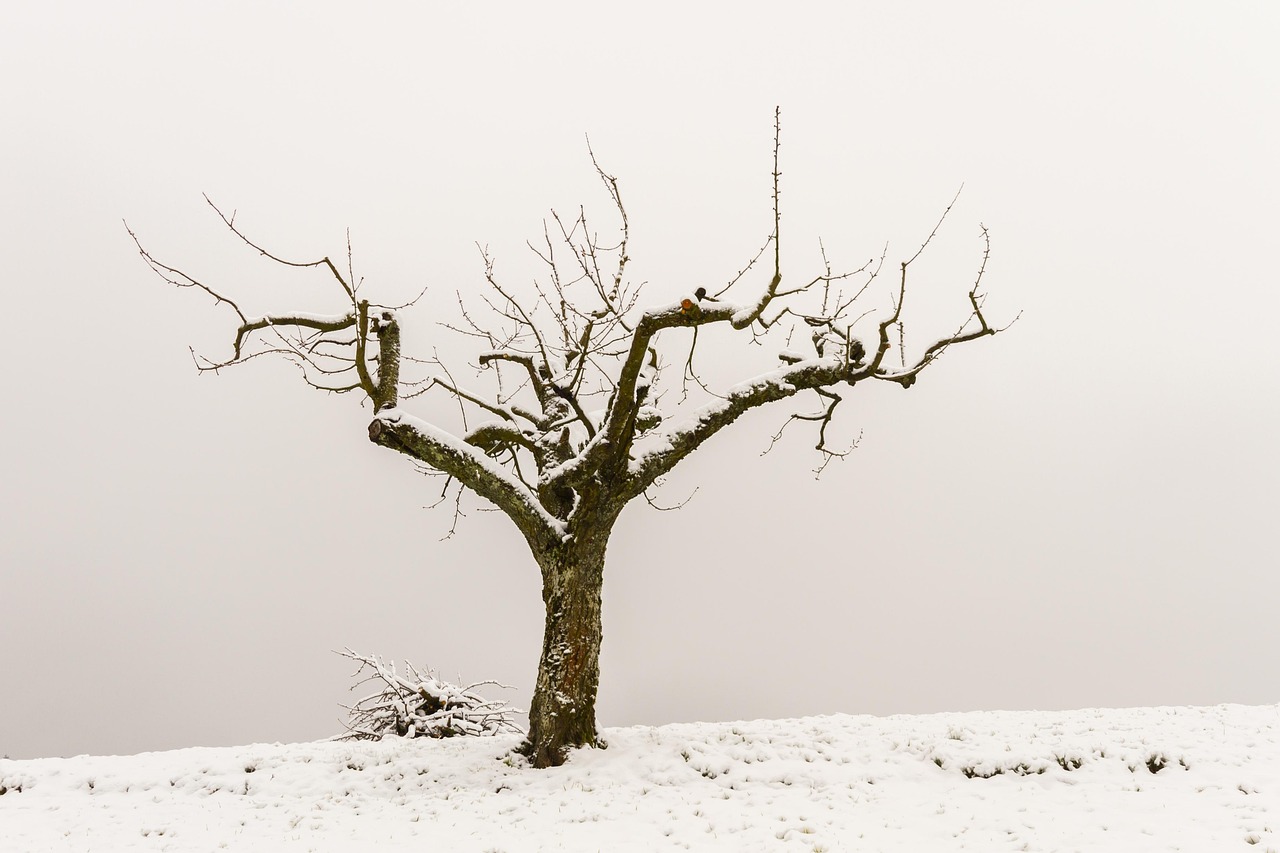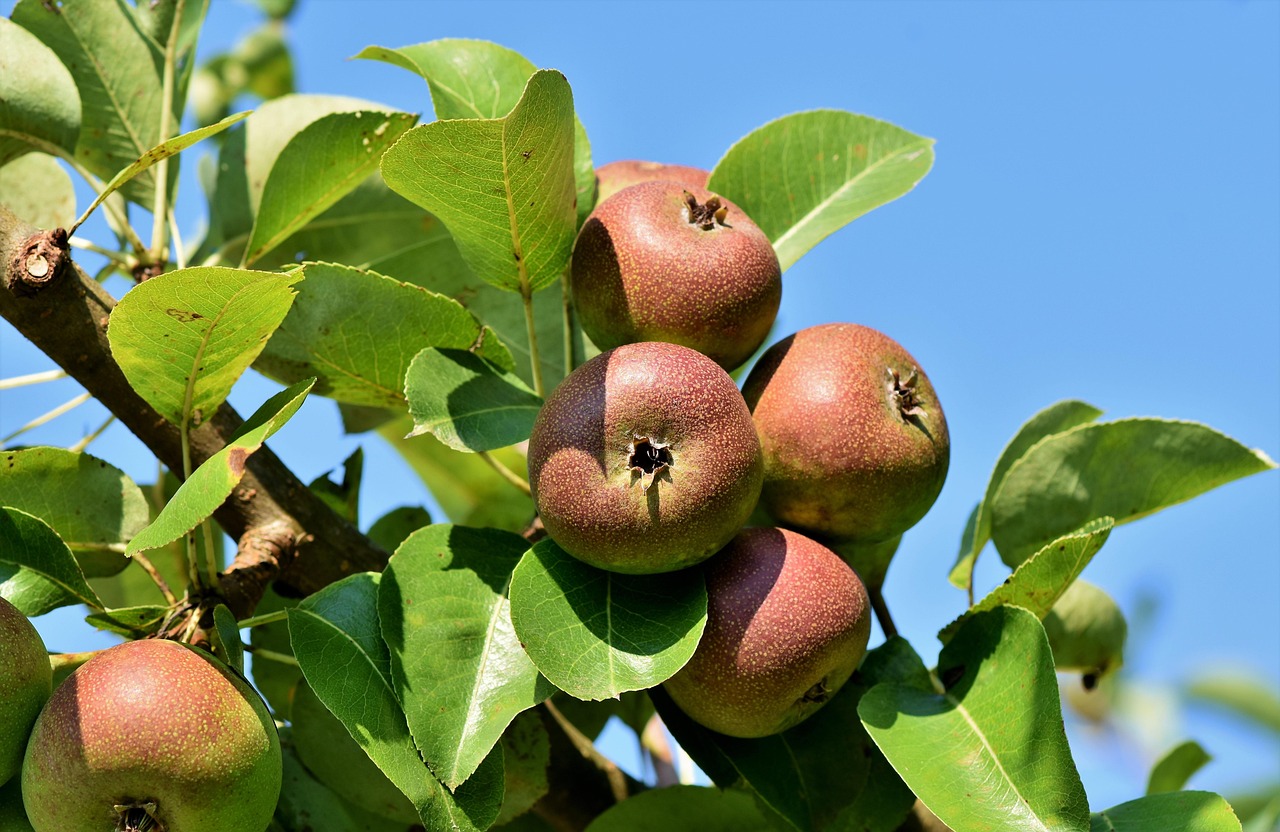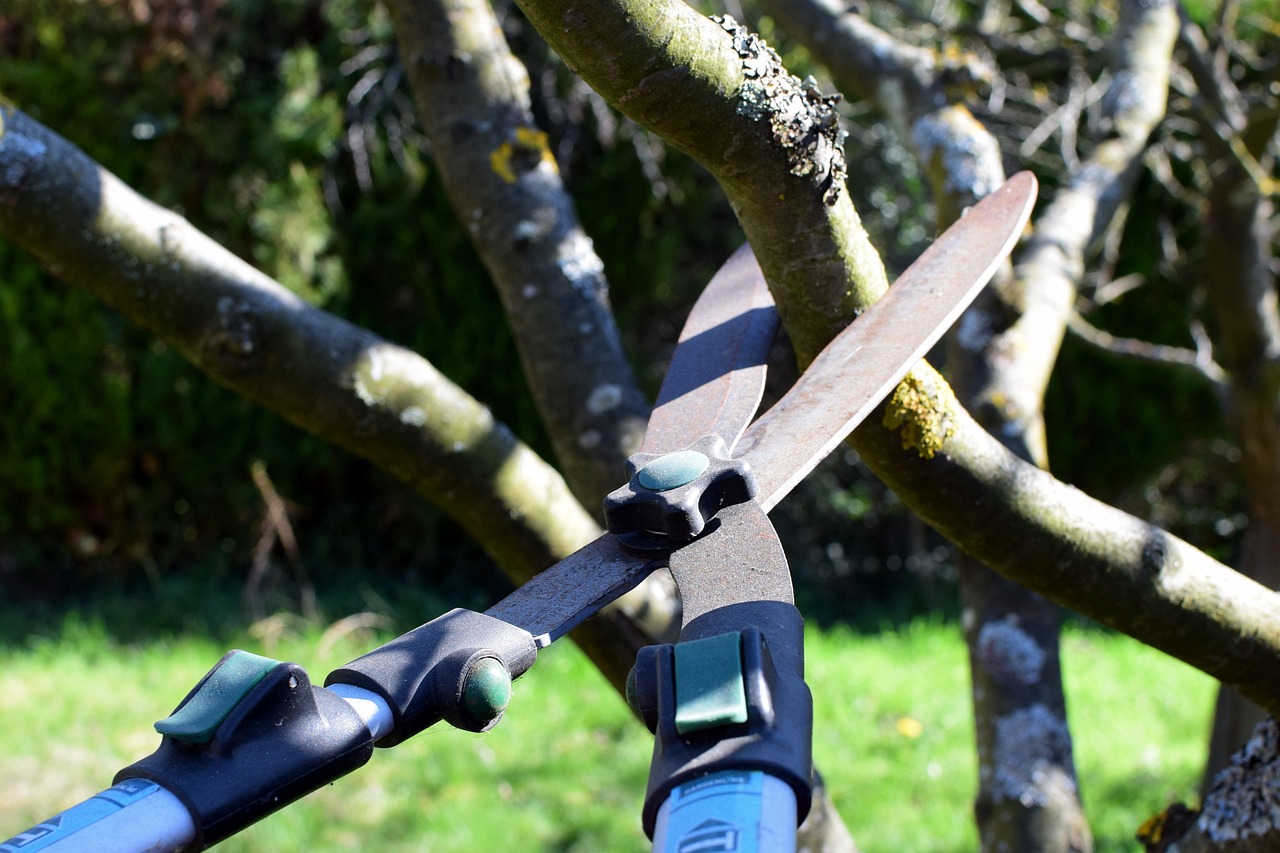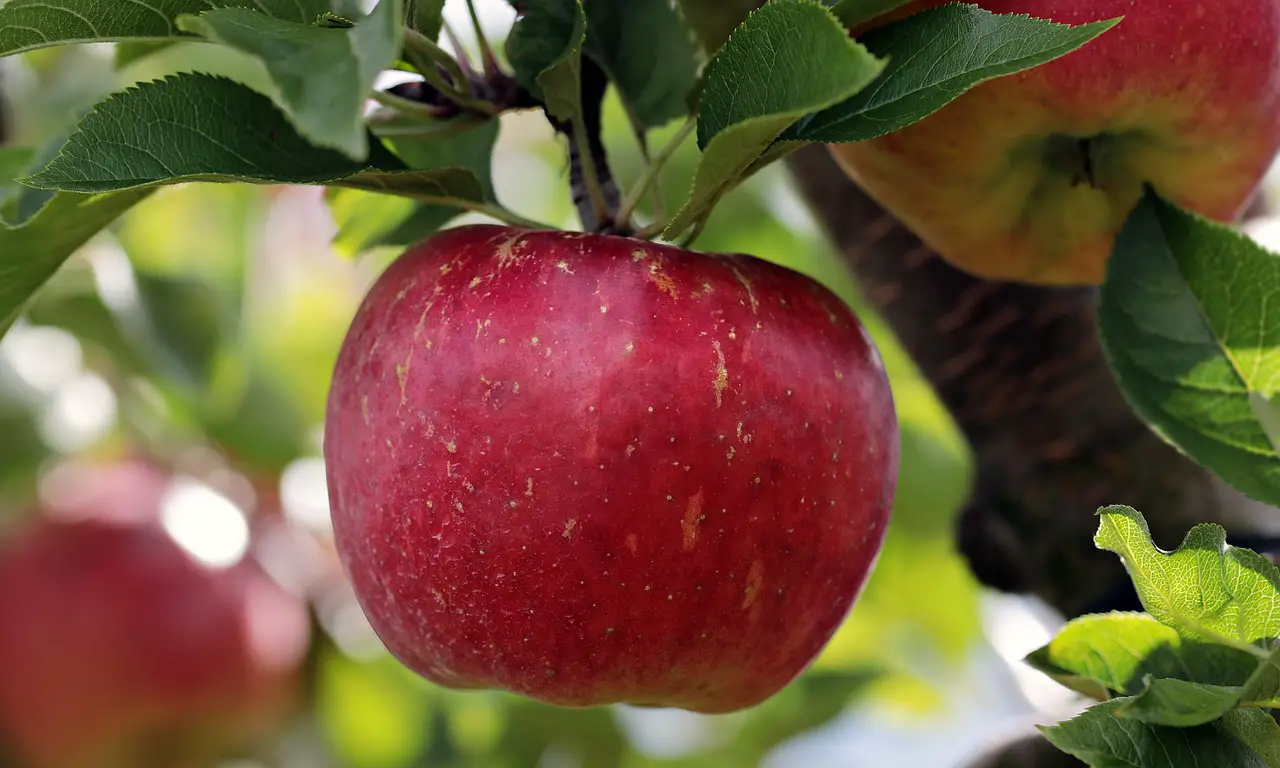Young apple tree pruning is essential for promoting early fruit yield. Properly pruning these trees helps shape their growth, encourages strong branch development, and improves air circulation, leading to healthier trees and better fruit production.
Apple trees are a popular choice among home gardeners and commercial orchards alike. They not only produce delicious fruit but also contribute beauty to landscapes. However, young apple trees require careful attention in their formative years. One of the most important practices for ensuring healthy growth and early fruit yield is proper pruning.

Pruning involves selectively removing certain parts of the tree to enhance its structure and fruit production. For young apple trees, this process can be particularly beneficial. It helps the tree establish a strong framework, which is crucial for supporting future crops. During the early years, the right cuts can determine the overall health and productivity of the tree.
Understanding the Importance of Pruning
The significance of pruning young apple trees cannot be overstated. Here are some key reasons why pruning is essential:
- Encourages Strong Growth: Pruning helps direct the tree’s energy into developing a robust structure.
- Improves Air Circulation: Thinning out excess branches allows for better air flow, reducing the risk of disease.
- Enhances Light Penetration: Properly pruned trees receive more sunlight, which is vital for photosynthesis and fruit development.
- Shapes Tree Structure: Pruning establishes a central leader and evenly spaced branches, creating a balanced tree.
- Increases Fruit Yield: A well-pruned tree is more likely to produce larger and healthier fruit.
Pruning not only aids in growth but also helps manage the overall size and shape of the tree. This is particularly important for apple trees, which can grow quite large if not maintained properly. By keeping the tree at a manageable size, gardeners can ensure easier harvesting and maintenance.

When to Prune Young Apple Trees
The timing of pruning is crucial for its effectiveness. Young apple trees are best pruned during their dormant season, typically in late winter or early spring before new growth begins. This timing minimizes stress on the tree and allows it to heal quickly from cuts. Here are some guidelines regarding timing:
| Season | Activity |
|---|---|
| Late Winter | Prune while dormant to promote healthy growth in spring. |
| Early Spring | Final touches on pruning before new buds appear. |
Avoid pruning in late summer or fall. These times can encourage new growth that may not harden off before winter, leaving the tree vulnerable to cold damage. Instead, focus on early spring for optimal results.
Techniques for Pruning Young Apple Trees
When it comes to pruning young apple trees, there are several techniques to consider. Each method serves a specific purpose and contributes to the overall health of the tree:

Heading Cuts
Heading cuts involve cutting back a branch to a bud or another branch. This technique encourages branching and creates a fuller tree. It is especially useful for young trees to promote lateral growth.
Thinning Cuts
Thinning cuts remove entire branches at their point of origin. This method opens up the canopy, allowing light and air to penetrate better. It reduces overcrowding and encourages healthier branch development.
Pinching
Pinching is a technique where you remove the very tips of young shoots. This practice promotes bushier growth by encouraging side shoots to develop. It is particularly effective in the first few years of a tree’s life.

Common Mistakes to Avoid
While pruning can significantly benefit young apple trees, there are common mistakes that gardeners should avoid:
- Over-pruning: Removing too much foliage can stress the tree and reduce fruit yield.
- Neglecting to Clean Tools: Using dirty tools can spread disease between trees.
- Ignoring Tree Structure: Failing to maintain a central leader can lead to weak trees.
- Pruning at the Wrong Time: Cutting during active growth can harm the tree.
By being aware of these pitfalls, you can ensure that your pruning efforts yield positive results.
Tools and Equipment for Pruning
Having the right tools is essential for effective pruning. The quality of your tools can greatly affect the outcome of your efforts. Here are some common tools used for pruning young apple trees:
- Pruning Shears: Ideal for small branches and precise cuts. Choose a pair that feels comfortable in your hand.
- Loppers: These are great for larger branches up to 2 inches thick. They provide leverage and are less tiring to use.
- Saws: A hand saw or a pole saw is necessary for thicker branches that cannot be cut with shears or loppers.
- Gloves: Protect your hands from cuts and scratches while working with branches.
- Bypass Pruners: These are useful for making clean cuts and reducing damage to the plant.
Always ensure that your tools are sharp and clean before starting. Dull tools can tear the bark and create wounds that may lead to disease. Cleaning tools between cuts is important to prevent spreading pathogens.
Understanding Tree Structure
To effectively prune young apple trees, it is essential to understand their natural structure. A well-structured tree will have a central leader, which is the main upward-growing stem, and several lateral branches. This structure supports healthy growth and fruit production. Here are key aspects of tree structure:
- Central Leader: This should be the tallest branch and serves as the main trunk.
- Lateral Branches: These should be spaced evenly around the trunk to allow sunlight to reach all parts of the tree.
- Scaffold Branches: These are the primary branches that support future growth and fruiting. They should be selected during initial pruning.
Maintaining this structure will help ensure that the tree grows strong and produces fruit efficiently. Regular evaluation during early years can help you make necessary adjustments.
Pruning Techniques by Age of Tree
The pruning approach may vary depending on the age of the apple tree. Here’s a breakdown of techniques suitable for different stages:
1 Year Old Trees
For trees that are just one year old, focus on shaping the tree. Here are some techniques:
- Select a central leader and remove any competing branches.
- Cut back lateral branches to encourage branching.
- Avoid heavy pruning; aim for light shaping instead.
2 to 3 Year Old Trees
At this stage, trees require more significant shaping to prepare for fruit production. Consider these steps:
- Remove any weak or crossing branches to improve air circulation.
- Encourage scaffold branches by selecting 3 to 5 strong lateral branches.
- Trim back branches to maintain a balanced structure and promote growth.
4 Years Old and Older Trees
For trees older than four years, the focus shifts towards maintaining health and productivity:
- Regularly inspect for dead or diseased wood and remove it promptly.
- Thin out crowded areas to allow sunlight penetration.
- Maintain scaffold branches by cutting back to lateral shoots.
Nurturing Your Young Apple Trees After Pruning
After pruning, it is vital to provide proper care to help your young apple trees recover and thrive. Here are some nurturing practices:
- Watering: Ensure adequate watering, especially during dry spells, to support recovery.
- Fertilizing: Use a balanced fertilizer in early spring to promote healthy growth.
- Pest Management: Monitor for pests that may take advantage of pruning wounds and apply appropriate treatments.
Nurturing your trees after pruning will not only support their recovery but also enhance their resilience against diseases and pests.
Monitoring Growth and Adjusting Pruning Practices
As your apple trees grow, it is essential to monitor their development closely. Regular assessments will help you adjust your pruning practices as needed. Look for signs of healthy growth, such as:
- New shoot development indicating vigorous growth.
- A balanced structure with even canopy distribution.
- Healthy foliage without signs of disease or distress.
If you notice any issues, consider modifying your pruning strategy or consulting with a local horticulturist for advice specific to your region and tree variety.
Signs of a Healthy Young Apple Tree
Recognizing the signs of a healthy young apple tree is crucial for successful cultivation. A healthy tree will have specific characteristics that indicate it is thriving and well-pruned. Here are some signs to look for:
- Vibrant Foliage: Leaves should be bright green and free of spots or discoloration.
- Strong Growth: New shoots and branches should grow vigorously, indicating proper nutrient uptake.
- Good Structure: A balanced structure with evenly spaced lateral branches suggests effective pruning.
- Minimal Pests: A lack of insect infestations and disease symptoms shows that the tree is healthy.
Monitoring these signs regularly will help you identify any potential issues early on. Early intervention can make a significant difference in the overall health of your apple trees.
Common Pests and Diseases
Young apple trees can be susceptible to various pests and diseases. Understanding these threats and how to manage them is essential for maintaining healthy trees. Below are some common pests and diseases to watch for:
Pests
- Apple Maggot: This fly lays eggs in the fruit, causing it to spoil. Look for small holes in the apples.
- Codling Moth: Larvae burrow into the fruit, leading to premature dropping or decay.
- Aphids: These small insects suck sap from leaves, leading to curled or yellowing foliage.
- Spider Mites: These pests cause stippling on leaves and can lead to leaf drop if not controlled.
Diseases
- Powdery Mildew: A fungal disease that appears as a white powdery coating on leaves and fruit.
- Cedar Apple Rust: This disease can cause yellow spots on leaves and is spread by cedars.
- Fire Blight: A bacterial infection that causes wilting and blackened branches, often requiring prompt pruning of infected areas.
Management Strategies for Pests and Diseases
Effective management strategies can help protect your young apple trees from pests and diseases. Here are some techniques to consider:
- Cultural Practices: Maintain good sanitation by removing fallen fruit and debris around the base of the tree.
- Regular Inspections: Check trees regularly for signs of pests or diseases, especially during the growing season.
- Pest Traps: Use pheromone traps to monitor and control populations of specific pests like codling moths.
- Organic Treatments: Consider using neem oil or insecticidal soap as natural pest control options.
By being proactive in managing pests and diseases, you can ensure your young apple trees remain healthy and productive.
The Role of Soil Health in Pruning Success
The health of the soil directly impacts the growth and resilience of your apple trees. Healthy soil provides essential nutrients, retains moisture, and promotes beneficial microbial activity. To enhance soil health, consider the following practices:
- Soil Testing: Conduct regular soil tests to determine nutrient levels and pH balance. This information will guide your fertilization strategy.
- Add Organic Matter: Incorporate compost or well-rotted manure into the soil to improve its structure and nutrient content.
- Avoid Compaction: Limit foot traffic around the root zone to prevent soil compaction, which can hinder root growth.
A well-maintained soil environment will support robust tree growth and improve overall health, making your pruning efforts more effective.
The Importance of Water Management
Water management plays a crucial role in the health of young apple trees. Proper watering ensures that trees receive adequate moisture without becoming over-saturated. Here are some tips for effective water management:
- Deep Watering: Water deeply but infrequently to encourage deep root growth. Aim for at least 1 inch of water per week during dry periods.
- Mulching: Apply mulch around the base of the tree to retain moisture, suppress weeds, and regulate soil temperature.
- Avoid Overwatering: Excess water can lead to root rot. Ensure that drainage is adequate in your planting area.
By managing water effectively, you can promote healthy growth and enhance the resilience of your young apple trees against stressors.
Engaging with Local Resources
Utilizing local resources can greatly benefit your apple tree care. Many regions have agricultural extensions or local gardening clubs that offer valuable information tailored to your area. Here are some ways to engage with local resources:
- Workshops and Classes: Attend workshops on fruit tree care offered by local agricultural extensions or gardening centers.
- Networking with Other Growers: Connect with local gardeners to share tips, experiences, and best practices for pruning and maintenance.
- Accessing Regional Research: Look for publications or studies related to apple cultivation specific to your climate zone.
Tapping into these resources can provide you with insights that enhance your success in growing young apple trees.
Long-Term Care for Young Apple Trees
After completing the initial pruning and establishing a routine for monitoring and maintenance, long-term care becomes crucial for ensuring the continued health and productivity of young apple trees. Here are several strategies to keep in mind as your trees mature:
- Regular Pruning: Continue to prune young apple trees annually. As the tree grows, adjust your pruning techniques to accommodate its changing structure. Aim to maintain an open canopy that promotes air circulation and light penetration.
- Nutritional Needs: Monitor the nutritional requirements of your trees as they age. The needs may change as the tree grows, so consider conducting soil tests every few years to stay informed about nutrient levels.
- Water Conservation: Implement sustainable watering practices to conserve water. Consider drip irrigation systems that deliver water directly to the roots while minimizing evaporation.
- Seasonal Mulching: Refresh mulch each year to maintain moisture, suppress weeds, and add organic matter to the soil as it breaks down.
- Pest and Disease Monitoring: Stay vigilant against potential pests and diseases even after initial treatments. Regular inspections will help you catch any issues early.
Establishing these long-term care practices will not only support your young apple trees but will also lay the foundation for healthy fruit production in the years to come.
Harvesting Your First Fruits
One of the most rewarding aspects of caring for young apple trees is finally harvesting your first fruits. However, knowing when and how to harvest is essential for enjoying the best flavor and quality. Here are some tips for harvesting:
- Timing: Harvest apples when they are fully colored and slightly firm. Different varieties have different harvest times, so familiarize yourself with the specific variety you are growing.
- Gentle Handling: Use care when picking apples to avoid bruising. Twist the apple gently while lifting to detach it from the branch.
- Storage: Store apples in a cool, dark place to prolong freshness. Make sure to handle them carefully to maintain quality.
- Taste Testing: Conduct taste tests as apples mature. This will help you determine the best time for harvesting based on flavor.
Harvesting marks a significant milestone in your apple-growing journey and is a testament to your hard work and dedication.
Common Apple Tree Varieties for Beginners
If you are new to growing apple trees, selecting the right variety can enhance your chances of success. Here are some popular apple tree varieties that are well-suited for beginners:
| Variety | Description | Best Uses |
|---|---|---|
| Honeycrisp | Known for its sweet flavor and crisp texture, Honeycrisp is a favorite among many apple lovers. | Eating fresh, salads, pies |
| Granny Smith | A tart green apple that is excellent for baking and cooking. | Baking, cooking, fresh eating |
| Fuji | This variety is sweet and juicy, making it ideal for snacking. | Eating fresh, salads |
| Gala | A sweet apple that’s great for fresh eating and has a beautiful red-orange hue. | Eating fresh, salads |
| Red Delicious | A classic variety with a sweet flavor and deep red color, popular for fresh consumption. | Eating fresh, salads |
Selecting a variety suited to your climate and growing conditions will enhance your overall success in fruit production.
Final Thoughts
Caring for young apple trees through proper pruning practices is vital for achieving early fruit yield and ensuring long-term health. By understanding the importance of structure, timing, and ongoing maintenance, gardeners can set their trees on a path toward productive growth. Remember to engage with local resources, monitor tree health regularly, and remain adaptable in your approach. With patience and dedication, you will enjoy thriving apple trees that bear delicious fruit for years to come.
Your journey with young apple trees can be immensely rewarding. Embrace the learning process, celebrate small victories along the way, and savor the delightful fruits of your labor when harvest time arrives.
